Science & Environment
Existing quantum devices could be used to disrupt the stock market

Commercially available quantum technology could let stock traders coordinate decisions to buy or sell nearly instantaneously using a technique called “quantum telepathy”
Source link
Science & Environment
Discovery of “hobbit” fossils suggests tiny humans roamed Indonesian islands 700,000 years ago

Twenty years ago on an Indonesian island, scientists discovered fossils of an early human species that stood at about 3 1/2 feet tall, earning them the nickname “hobbits.”
Now a new study suggests ancestors of the hobbits were even slightly shorter.
“We did not expect that we would find smaller individuals from such an old site,” said Yousuke Kaifu, co-author of the study, which was published on Tuesday in the journal Nature.
The original hobbit fossils date back to between 60,000 and 100,000 years ago. The new fossils were excavated at a site called Mata Menge, about 45 miles from the cave where the first hobbit remains were uncovered. The fossils were found on the top of a ribbon-shaped, pebbly sandstone layer in a small stream. They included exceptionally small teeth that possibly came from two individuals, researchers said.
In 2016, researchers suspected the earlier relatives could be shorter than the hobbits after studying a jawbone and teeth collected from the new site. Further analysis of a tiny arm bone fragment and teeth suggests the ancestors were a mere 2.4 inches shorter and existed 700,000 years ago.
“They’ve convincingly shown that these were very small individuals,” said Dean Falk, an evolutionary anthropologist at Florida State University who was not involved with the research.
Researchers have debated how the hobbits — named Homo floresiensis after the remote Indonesian island of Flores — evolved to be so small and where they fall in the human evolutionary story. They’re thought to be among the last early human species to go extinct.
Scientists don’t yet know whether the hobbits shrank from an earlier, taller human species called Homo erectus that lived in the area, or from an even more primitive human predecessor. More research — and fossils — are needed to pin down the hobbits’ place in human evolution, said Matt Tocheri, an anthropologist at Canada’s Lakehead University.
“This question remains unanswered and will continue to be a focus of research for some time to come,” Tocheri, who was not involved with the research, said in an email.
Science & Environment
NASA outlines backup plan to get Starliner crew back to Earth from International Space Station if Boeing ship can’t bring them home
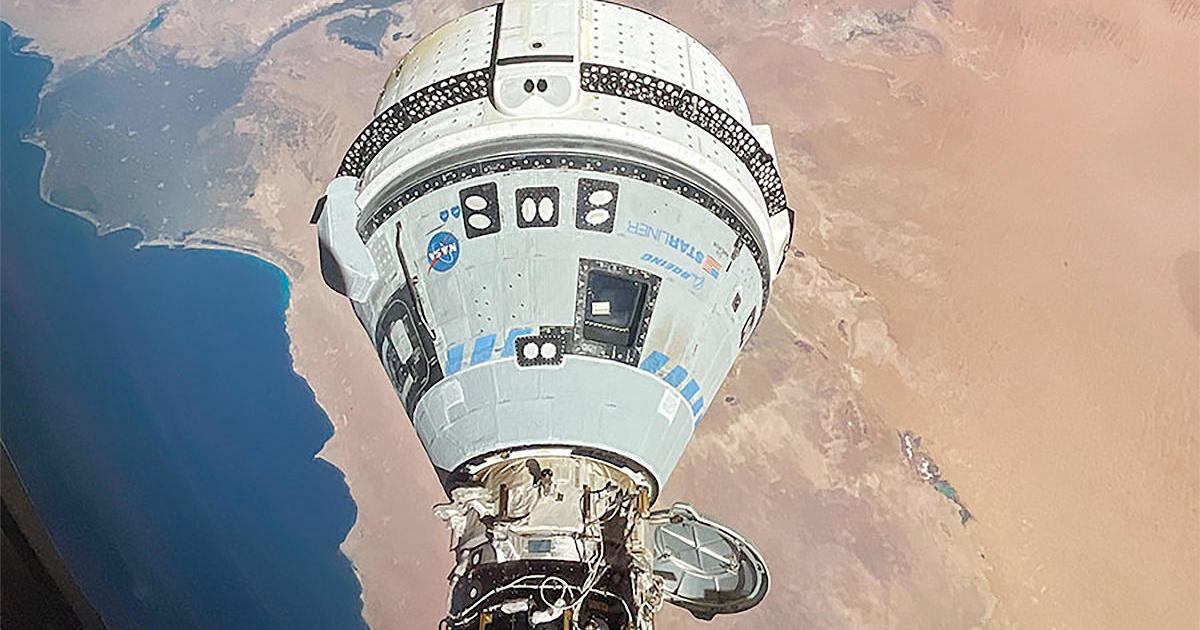
As NASA debates the safety of Boeing’s Starliner spacecraft in the wake of multiple helium leaks and thruster issues, the agency is “getting more serious” about a backup plan to bring the ship’s two crew members back to Earth aboard a SpaceX Crew Dragon, officials said Wednesday.
In that case — and no final decisions have been made — Starliner commander Barry “Butch” Wilmore and co-pilot Sunita Williams would remain aboard the International Space Station for another six months and come down on a Crew Dragon that’s scheduled for launch Sept. 24 to carry long-duration crew members to the outpost.
Two of the four “Crew 9” astronauts already assigned to the Crew Dragon flight would be bumped from the mission and the ship would be launched with two empty seats. Wilmore and Williams then would return to Earth next February with the two Crew 9 astronauts.
Shortly before the Crew Dragon launch, the Starliner would undock from the station’s forward port and return to Earth under computer control, without any astronauts aboard. The Crew Dragon then would dock at the vacated forward port.
Two earlier Starliner test flights were flown without crews and both landed successfully. The current Starliner’s computer system would need to be updated with fresh data files, and flight controllers would need to brush up on the procedures, but that work can be done in time to support a mid September return.
If that scenario plays out, Wilmore and Williams would end up spending 268 days — 8.8 months — in space instead of the week or so they planned when they blasted off atop a United Launch Alliance Atlas 5 rocket on June 5.
Based on uncertainty about the precise cause of the thruster problems, “I would say that our chances of an uncrewed Starliner return have increased a little bit based on where things have gone over the last week or two,” said Ken Bowersox, NASA’s director of space operations.
“That’s why we’re looking more closely at that option to make sure that we can handle it.”
But he cautioned that no final decisions will be made on when — or how — to bring the Starliner crew home until the agency completes a top-level flight readiness review.
No date has been set, but it could happen by late next week or the week after.
“Our prime option is to return Butch and Suni on Starliner,” said Steve Stich, manager of NASA’s Commercial Crew Program. “However, we have done the requisite planning to make sure we have other options open. We have been working with SpaceX to ensure that they’re ready to (return) Butch and Suni on Crew 9 if we need that.
“Now, we haven’t approved this plan (yet). We’ve done all the work to make sure this plan is there … but we have not turned that on formally. We wanted to make sure we had all that flexibility in place.”
Before the Starliner was launched, NASA and Boeing engineers knew about a small helium leak in the spacecraft’s propulsion system. After ground tests and analysis, the team concluded the ship could be safely launched as is.
The day after launch, however, four more helium leaks developed and five aft-facing maneuvering thrusters failed to operate as expected. Ever since, NASA and Boeing have been carrying out data reviews and ground tests in an effort to understand exactly what caused both issues.
The Starliner uses pressurized helium to push propellants to the thrusters, which are critical to keeping the spacecraft properly oriented. That’s especially important during the de-orbit braking “burn” using larger rocket engines to slow the ship down for re-entry and an on-target landing.
To clear the Starliner for a piloted return to Earth, engineers must develop acceptable “flight rationale” based on test data and analyses that provides confidence the ship can make it through re-entry and landing with the required level of safety.
“The Boeing team (is) very confident that the vehicle could bring the crew home right now with the uncertainty we’ve got,” said Bowersox. “But we’ve got other folks that are probably a little more conservative. They’re worried that we don’t know for sure, so they estimate the risk higher and they would recommend that that we avoid coming home (on Starliner) because we have another option.
“So that’s a part of the discussion that we’re having right now. But again, I think both views are reasonable with the uncertainty band that we’ve got, and so our effort is trying to reduce that uncertainty.”
Boeing adamantly argues the Crew Dragon backup plan isn’t needed and that tests and analyses of helium leaks in the Starliner’s propulsion system and initial trouble with maneuvering thrusters show the spacecraft has more than enough margin to bring Wilmore and Williams safely back to Earth.
The helium leaks are understood, Boeing says, they have not gotten worse and more than enough of the pressurized gas is on board to push propellants to the thrusters needed to maneuver and stabilize the spacecraft through the critical de-orbit braking burn to drop out of orbit for re-entry and landing.
Likewise, engineers believe they now understand what caused a handful of aft-facing maneuvering jets to overheat and fire at lower-than-expected thrust during rendezvous with the space station, causing the Starliner’s flight computer to shut them down during approach.
Ground tests of a new Starliner thruster, fired hundreds of times under conditions that mimicked what those aboard the spacecraft experienced, replicated the overheating signature, which was likely caused by multiple firings during tests of the capsule’s manual control system during extended exposure to direct sunlight.
The higher-than-expected heating likely caused small seals in thruster valve “poppets” to deform and expand, the analysis indicates, which reduced the flow of propellant. The thrusters aboard the Starliner were test fired in space under more normal conditions and all operated properly, indicating the seals had returned to a less intrusive shape.
New procedures are in place to prevent the overheating that occurred during the rendezvous. Additional manual test firings have been ruled out, no extended exposure to the sun is planned and less frequent firings are required for station departure compared to rendezvous.
In a statement Wednesday, Boeing said, “We still believe in Starliner’s capability and its flight rationale. If NASA decides to change the mission, we will take the actions necessary to configure Starliner for an uncrewed return.”
The helium plumbing and thrusters are housed in the Starliner’s service module, which will be jettisoned to burn up in the atmosphere before the crew capsule re-enters for landing. As such, engineers will never be able to examine the hardware first hand to prove, with certainty, what went wrong.
At this point, that uncertainty appears to support bringing Wilmore and Williams back to Earth aboard the Crew Dragon. But it’s not yet a certainty.
“If we could replicate the physics in some offline testing to understand why this poppet is heating up and extruding and then why it’s contracting, that would give us additional confidence to move forward, to return Butch and Sonny on this vehicle,” Stich said.
“That’s what the team is really striving to do, to try to look at all the data and see if we can get a good physical explanation of what’s happening.”
In the meantime, the wait for a decision, one way or the other, drags on.
“In the end, somebody – some one person – designated to be the decision maker, that person has to come to a conclusion,” Wayne Hale, a former shuttle flight director and program manager, wrote in a blog post earlier this week.
“The engineers will always always always ask for more tests, more analysis, more time to get more information to be more certain of their conclusions. The decider also has to decide when enough has been done. The rub in all of this … is that it always involves the risk to human life.”
Hale concluded his post by saying: “I do not envy today’s decision makers, the ones weighing flight rationale. My only advice is to listen thoroughly, question effectively, ask for more data when necessary. But when it is time, a decision must be made.”
Science & Environment
Drones setting a new standard in ocean rescue technology
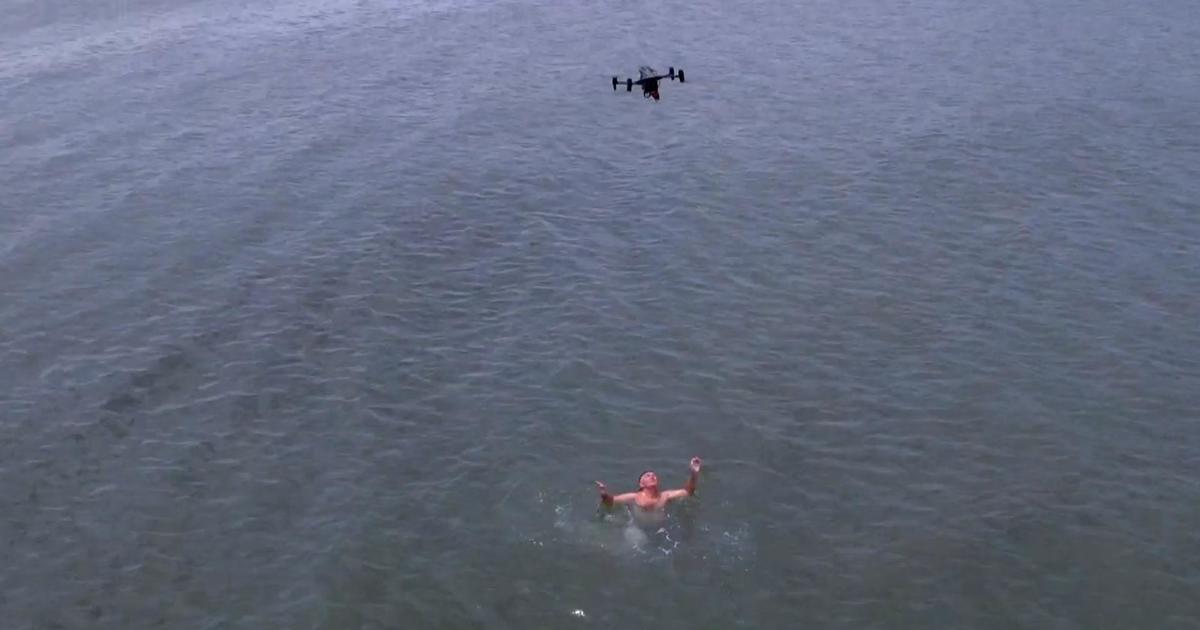
Last month, two young paddleboarders found themselves stranded in the ocean, pushed 2,000 feet from the shore by strong winds and currents. Thanks to the deployment of a drone, rescuers kept an eye on them the whole time and safely brought them aboard a rescue boat within minutes.
In North Carolina, the Oak Island Fire Department is one of a few in the country using drone technology for ocean rescues. Firefighter-turned-drone pilot Sean Barry explained the drone’s capabilities as it was demonstrated on a windy day.
“This drone is capable of flying in all types of weather and environments,” Barry said.
Equipped with a camera that can switch between modes — including infrared to spot people in distress — responders can communicate instructions through a speaker. It also can carry life-preserving equipment.
The device is activated by a CO2 cartridge when it comes in contact with water. Once triggered, it inflates into a long tube, approximately 26 inches long, providing distressed swimmers something to hold on to.
In a real-life rescue, after a 911 call from shore, the drone spotted a swimmer in distress. It released two floating tubes, providing the swimmer with buoyancy until help arrived.
Like many coastal communities, Oak Island’s population can swell from about 10,000 to 50,000 during the summer tourist season. Riptides, which are hard to detect on the surface, can happen at any time.
Every year, about 100 people die due to rip currents on U.S. beaches. More than 80% of beach rescues involve rip currents, if you’re caught in one, rescuers advise to not panic or try to fight it, but try to float or swim parallel to the coastline to get out of the current.
Oak Island Fire Chief Lee Price noted that many people underestimate the force of rip currents.
“People are, ‘Oh, I’m a good swimmer. I’m gonna go out there,’ and then they get in trouble,” Price said.
For Price, the benefit of drones isn’t just faster response times but also keeping rescuers safe. Through the camera and speaker, they can determine if someone isn’t in distress.
Price said many people might not be aware of it.
“It’s like anything as technology advances, it takes a little bit for everybody to catch up and get used to it,” said Price.
In a demonstration, Barry showed how the drone can bring a safety rope to a swimmer while rescuers prepare to pull the swimmer to shore.
“The speed and accuracy that this gives you … rapid deployment, speed, accuracy, and safety overall,” Price said. “Not just safety for the victim, but safety for our responders.”
Science & Environment
Horseshoe crabs: Ancient creatures who are a medical marvel
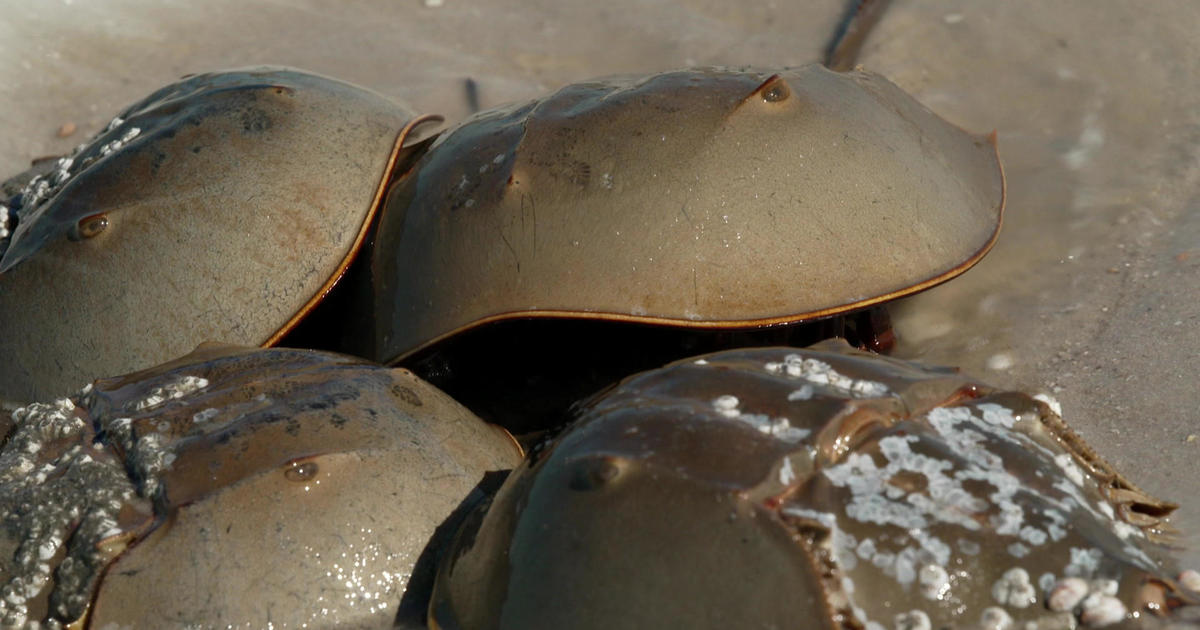
Watch CBS News
Be the first to know
Get browser notifications for breaking news, live events, and exclusive reporting.
Science & Environment
SpaceX to launch bitcoin entrepreneur and three crewmates on flight around Earth’s poles
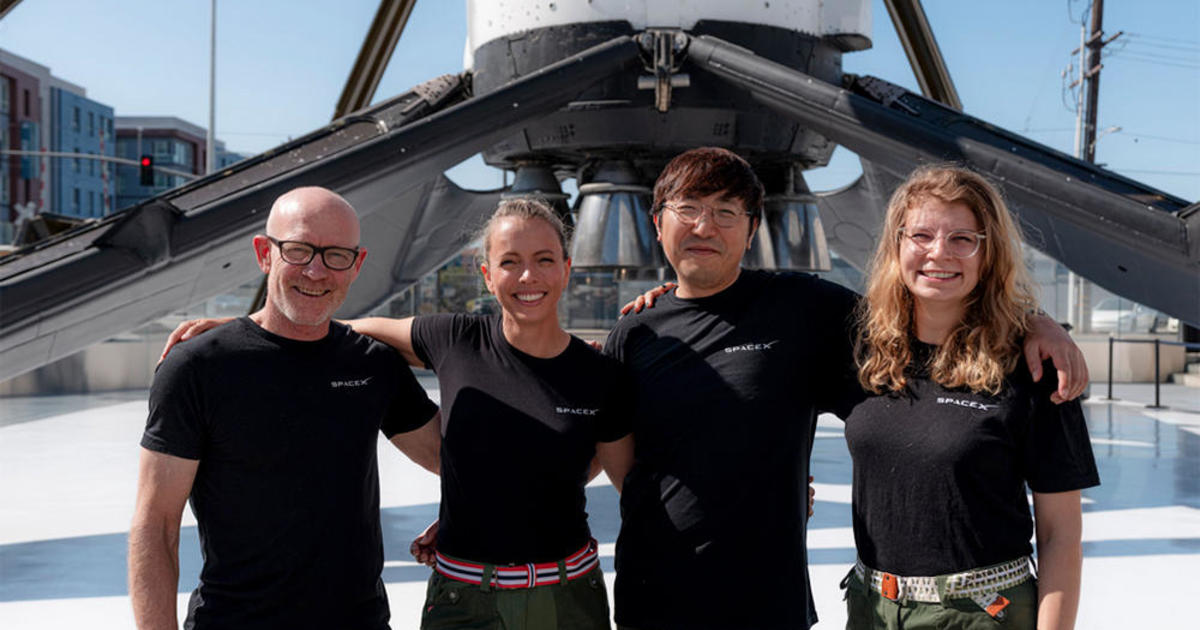
A blockchain entrepreneur, a cinematographer, a polar adventurer and a robotics researcher plan to fly around Earth’s poles aboard a SpaceX Crew Dragon capsule by the end of the year, becoming the first humans to observe the ice caps and extreme polar environments from orbit, SpaceX announced Monday.
The historic flight, launched from the Kennedy Space Center in Florida, will be commanded by Chun Wang, a wealthy bitcoin pioneer who founded f2pool and stakefish, “which are among the largest Bitcoin mining pools and Ethereum staking providers,” the crew’s website says.
“Wang aims to use the mission to highlight the crew’s explorational spirit, bring a sense of wonder and curiosity to the larger public and highlight how technology can help push the boundaries of exploration of Earth and through the mission’s research,” SpaceX said on its website.
Wang’s crewmates are Norwegian cinematographer Jannicke Mikkelsen, Australian adventurer Eric Philips and Rabea Rogge, a German robotics researcher. All four have an interest in extreme polar environments and plan to carry out related research and photography from orbit.
The mission, known as “Fram2” in honor of a Norwegian ship used to explore both the Arctic and Antarctic regions, will last three to five days and fly at altitudes between about 265 and 280 miles.
“This looks like a cool & well thought out mission. I wish the @framonauts the best on this epic exploration adventure!” tweeted Jared Isaacman, the billionaire philanthropist who charted the first private SpaceX mission — Inspiration4 — and who plans to blast off on a second flight — Polaris Dawn — later this month.
The flights “showcase what commercial missions can achieve thanks to @SpaceX’s reusability and NASA’s vision with the commercial crew program,” Isaacman said. “All just small steps towards unlocking the last great frontier.”
Like the Inspiration4 mission before them, Wang and his crewmates will fly in a Crew Dragon equipped with a transparent cupola giving them a picture-window view of Earth below and deep space beyond.
No astronauts or cosmonauts have ever viewed Earth from the vantage point of a polar orbit, one tilted, or inclined, 90 degrees to the equator. Such orbits are favored by spy satellites, weather stations and commercial photo-reconnaissance satellites because they fly over the entire planet as it rotates beneath them.
The high-inclination record for piloted flight was set in the early 1960s by Soviet Vostok spacecraft launched into orbits inclined 65 degrees. The U.S. record was set by a space shuttle mission launched in 1990 that carried out a classified military mission in an orbit tilted 62 degrees with respect to the equator.
The International Space Station never flies beyond 51.6 degrees north and south latitude. NASA planned to launch a space shuttle on a classified military mission around the poles in 1986, but the flight was canceled in the wake of the Challenger disaster.
“The North and South Poles are invisible to astronauts on the International Space Station, as well as to all previous human spaceflight missions except for the Apollo lunar missions but only from far away,” the Fram2 website says. “This new flight trajectory will unlock new possibilities for human spaceflight.”
SpaceX has launched 13 piloted missions carrying 50 astronauts, cosmonauts and private citizens to orbit in nine NASA flights to the space station, three commercial visits to the lab and the Inspiration4 mission chartered by Isaacman.
Isaacman and three crewmates plan to blast off Aug. 26 on another fully commercial flight, this one featuring the first civilian spacewalks. NASA plans to launch its next Crew Dragon flight to the space station around Sept. 24.
Science & Environment
Giant “flying” Joro spiders love big cities. A new study found their ability to chill out in stressful situations may be why
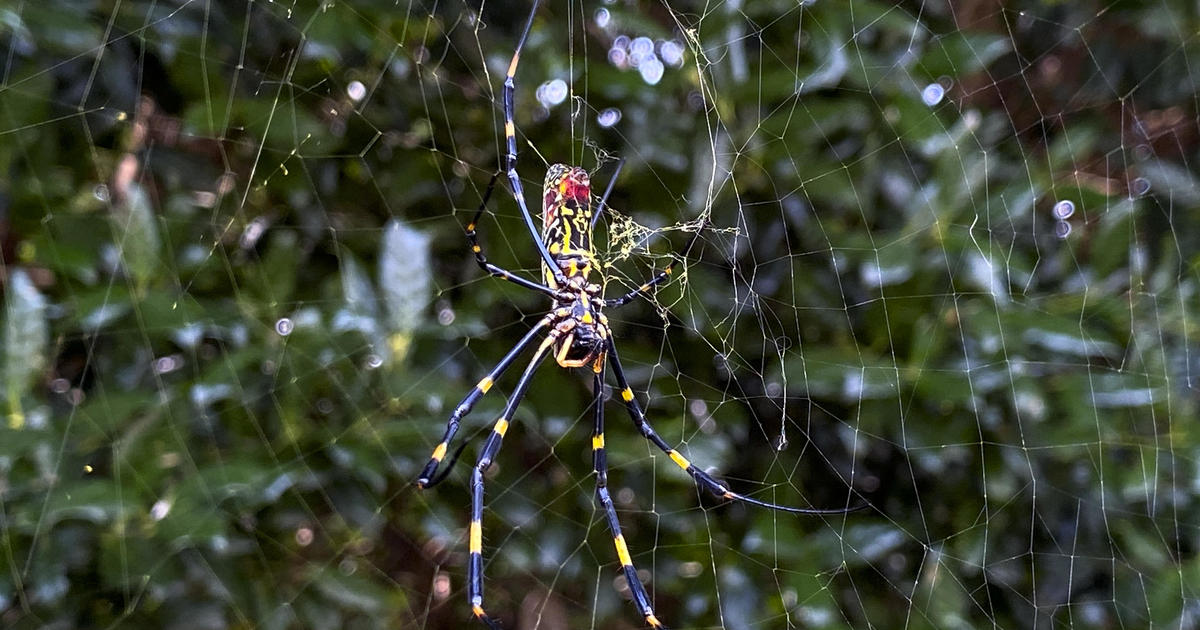
The saga of the large invasive Joro spiders that parachute through the air isn’t over. A new study found that the critters with 4-inch-long legs are truly built differently, with hearts that are able to withstand the loud and bustling noises of big cities.
University of Georgia researcher Andy Davis made the discovery while conducting cardiac stress tests on Joro spiders and their cousin, the golden silk spider. The research, published in Physiological Entomology on Monday, found that the species know how to chill out and stay calm when put in heart rate-raising situations.
The Joro spider, also known as Trichonephila clavata, “is known for making webs not only in natural green spaces but also in cities and towns, often on buildings and human dwellings,” the study says. “The stress reactions of Trichonephila spiders could be characterized as ‘even-tempered,’ which may factor into their ability to live in habitats with frequent disturbances.”
Davis and his team evaluated the physiological reactions of Joro spiders and golden silk spiders and compared them to those of another pair of similarly-sized species that are related to each other, garden spiders and banded garden spiders.
Researchers recorded baseline heart rates of the arachnids while they were resting and inactive, and then recorded their heart rates after restraining them under electronic sensors for 10 minutes.
“When subjected to the novel restraint stress, heart rates of all spider species became elevated, which is an expected reaction that other spider researchers have noted,” the study says. “However, there were differences among species in the magnitude of this elevation, and of how the responses progressed during the 10 min period.”
The garden spiders, both of which belong to the Argiope genus, showed “distinct periods of fluctuations during the restraint” and were even found to struggle against the restraints, researchers said. Joro spiders and their golden silk cousins, on the other hand, were “less variable and more even.” They were also observed entering a state of thanatosis for more than an hour after stressors, meaning they essentially froze up during that time.
The tests “are beginning to paint a picture of how the invasive Joro spider and its cousin, the golden silk spider, have a unique way of tolerating novel stressors, which may be the reason for their ability to occupy anthropogenic landscapes,” researchers said, noting that other spider species in their family line could share this trait, although that would need further investigation.
Joro spiders have been making headlines for years as they continue to spread up the East Coast. Originally from Asia, the spiders are believed to have been first introduced to north Georgia around 2010. They have since been found across nearly a dozen other states. In December, Davis told The New York Times that New York is “right in the middle of where they like to be.” It’s been predicted that they could pop up in the New York tri-state area this summer, although no reports of such have been made.
“They seem to be OK with living in a city,” he told the paper, adding that they’ve been seen hanging out on street lamps and telephone poles, where “regular spiders wouldn’t be caught dead in.”
The latest findings may not definitively prove that the spiders’ relaxed demeanor is the reason for “their affinity for urban settings,” the study says, adding that more research is needed. It does, however, bolster Davis’ research from February, which also found that Joro spiders don’t necessarily mind the increased noise and vibrations that come with city living.
“These Joro webs are everywhere in the fall, including right next to busy roads, and the spiders seem to be able to make a living there. For some reason, these spiders seem urban tolerant,” Davis said of his earlier research.
UGA student and co-author of that study, Alexa Schultz, agreed, saying, “It looks like Joro spiders are not going to shy away from building a web under a stoplight or an area where you wouldn’t imagine a spider to be.”
But don’t worry — while the spiders are venomous, they don’t pose a danger to humans, although they may elevate your heart rate more than you elevate theirs.
-

 Sport8 hours ago
Sport8 hours agoJoshua vs Dubois: Chris Eubank Jr says ‘AJ’ could beat Tyson Fury and any other heavyweight in the world
-

 News1 day ago
News1 day agoYou’re a Hypocrite, And So Am I
-

 News9 hours ago
News9 hours agoIsrael strikes Lebanese targets as Hizbollah chief warns of ‘red lines’ crossed
-

 Sport8 hours ago
Sport8 hours agoUFC Edmonton fight card revealed, including Brandon Moreno vs. Amir Albazi headliner
-

 CryptoCurrency7 hours ago
CryptoCurrency7 hours agoEthereum is a 'contrarian bet' into 2025, says Bitwise exec
-

 Technology7 hours ago
Technology7 hours agoiPhone 15 Pro Max Camera Review: Depth and Reach
-

 CryptoCurrency8 hours ago
CryptoCurrency8 hours ago2 auditors miss $27M Penpie flaw, Pythia’s ‘claim rewards’ bug: Crypto-Sec
-

 CryptoCurrency8 hours ago
CryptoCurrency8 hours agoTreason in Taiwan paid in Tether, East’s crypto exchange resurgence: Asia Express
-

 CryptoCurrency8 hours ago
CryptoCurrency8 hours agoJourneys: Robby Yung on Animoca’s Web3 investments, TON and the Mocaverse
-

 CryptoCurrency8 hours ago
CryptoCurrency8 hours agoAre there ‘too many’ blockchains for gaming? Sui’s randomness feature: Web3 Gamer
-

 CryptoCurrency8 hours ago
CryptoCurrency8 hours agoCrypto whales like Humpy are gaming DAO votes — but there are solutions
-

 CryptoCurrency8 hours ago
CryptoCurrency8 hours agoHelp! My parents are addicted to Pi Network crypto tapper
-

 CryptoCurrency8 hours ago
CryptoCurrency8 hours ago$12.1M fraud suspect with ‘new face’ arrested, crypto scam boiler rooms busted: Asia Express
-

 CryptoCurrency8 hours ago
CryptoCurrency8 hours ago‘Everything feels like it’s going to shit’: Peter McCormack reveals new podcast
-

 CryptoCurrency8 hours ago
CryptoCurrency8 hours agoSEC sues ‘fake’ crypto exchanges in first action on pig butchering scams
-

 CryptoCurrency8 hours ago
CryptoCurrency8 hours agoFed rate cut may be politically motivated, will increase inflation: Arthur Hayes
-

 CryptoCurrency8 hours ago
CryptoCurrency8 hours agoDecentraland X account hacked, phishing scam targets MANA airdrop
-

 CryptoCurrency8 hours ago
CryptoCurrency8 hours agoBitcoin miners steamrolled after electricity thefts, exchange ‘closure’ scam: Asia Express
-

 CryptoCurrency8 hours ago
CryptoCurrency8 hours agoCardano founder to meet Argentina president Javier Milei
-

 CryptoCurrency8 hours ago
CryptoCurrency8 hours agoCertiK Ventures discloses $45M investment plan to boost Web3
-

 CryptoCurrency8 hours ago
CryptoCurrency8 hours agoMemecoins not the ‘right move’ for celebs, but DApps might be — Skale Labs CMO
-

 CryptoCurrency8 hours ago
CryptoCurrency8 hours agoDorsey’s ‘marketplace of algorithms’ could fix social media… so why hasn’t it?
-

 CryptoCurrency8 hours ago
CryptoCurrency8 hours agoTelegram bot Banana Gun’s users drained of over $1.9M
-

 CryptoCurrency8 hours ago
CryptoCurrency8 hours agoLow users, sex predators kill Korean metaverses, 3AC sues Terra: Asia Express
-

 CryptoCurrency8 hours ago
CryptoCurrency8 hours agoSEC asks court for four months to produce documents for Coinbase
-

 Science & Environment11 hours ago
Science & Environment11 hours ago‘Running of the bulls’ festival crowds move like charged particles
-

 MMA7 hours ago
MMA7 hours agoUFC’s Cory Sandhagen says Deiveson Figueiredo turned down fight offer
-

 MMA7 hours ago
MMA7 hours agoDiego Lopes declines Movsar Evloev’s request to step in at UFC 307
-

 Football7 hours ago
Football7 hours agoNiamh Charles: Chelsea defender has successful shoulder surgery
-

 Football7 hours ago
Football7 hours agoSlot's midfield tweak key to Liverpool victory in Milan
-

 Science & Environment11 hours ago
Science & Environment11 hours agoRethinking space and time could let us do away with dark matter
-

 Science & Environment11 hours ago
Science & Environment11 hours agoHow one theory ties together everything we know about the universe
-

 CryptoCurrency8 hours ago
CryptoCurrency8 hours agoSEC settles with Rari Capital over DeFi pools, unregistered broker activity
-

 News6 hours ago
News6 hours agoBrian Tyree Henry on voicing young Megatron, his love for villain roles
-

 Science & Environment22 hours ago
Science & Environment22 hours agoQuantum time travel: The experiment to ‘send a particle into the past’
-

 Science & Environment8 hours ago
Science & Environment8 hours agoWe may have spotted a parallel universe going backwards in time
-

 CryptoCurrency8 hours ago
CryptoCurrency8 hours agoArthur Hayes’ ‘sub $50K’ Bitcoin call, Mt. Gox CEO’s new exchange, and more: Hodler’s Digest, Sept. 1 – 7
-

 CryptoCurrency8 hours ago
CryptoCurrency8 hours agoLeaked Chainalysis video suggests Monero transactions may be traceable
-

 CryptoCurrency8 hours ago
CryptoCurrency8 hours agoLouisiana takes first crypto payment over Bitcoin Lightning
-

 CryptoCurrency8 hours ago
CryptoCurrency8 hours agoFive crypto market predictions that haven’t come true — yet
-

 CryptoCurrency8 hours ago
CryptoCurrency8 hours agoSolana unveils new Seeker device, says it’s not just a ‘memecoin phone’
-

 CryptoCurrency8 hours ago
CryptoCurrency8 hours agoReal-world asset tokenization is the crypto killer app — Polygon exec
-

 Science & Environment11 hours ago
Science & Environment11 hours agoFuture of fusion: How the UK’s JET reactor paved the way for ITER
-

 CryptoCurrency8 hours ago
CryptoCurrency8 hours agoBinance CEO says task force is working ‘across the clock’ to free exec in Nigeria
-

 CryptoCurrency8 hours ago
CryptoCurrency8 hours agoElon Musk is worth 100K followers: Yat Siu, X Hall of Flame
-

 CryptoCurrency8 hours ago
CryptoCurrency8 hours agoBitcoin price hits $62.6K as Fed 'crisis' move sparks US stocks warning
-

 CryptoCurrency8 hours ago
CryptoCurrency8 hours agoCZ and Binance face new lawsuit, RFK Jr suspends campaign, and more: Hodler’s Digest Aug. 18 – 24
-

 CryptoCurrency8 hours ago
CryptoCurrency8 hours agoBeat crypto airdrop bots, Illuvium’s new features coming, PGA Tour Rise: Web3 Gamer
-

 CryptoCurrency8 hours ago
CryptoCurrency8 hours agoBitcoin bull rally far from over, MetaMask partners with Mastercard, and more: Hodler’s Digest Aug 11 – 17
-

 CryptoCurrency8 hours ago
CryptoCurrency8 hours agoVonMises bought 60 CryptoPunks in a month before the price spiked: NFT Collector
-

 CryptoCurrency8 hours ago
CryptoCurrency8 hours agoVitalik tells Ethereum L2s ‘Stage 1 or GTFO’ — Who makes the cut?
-

 CryptoCurrency8 hours ago
CryptoCurrency8 hours agoEthereum falls to new 42-month low vs. Bitcoin — Bottom or more pain ahead?
-

 CryptoCurrency8 hours ago
CryptoCurrency8 hours agoBlockdaemon mulls 2026 IPO: Report
-
Business7 hours ago
How Labour donor’s largesse tarnished government’s squeaky clean image
-
Business6 hours ago
UK hospitals with potentially dangerous concrete to be redeveloped
-
Business6 hours ago
Axel Springer top team close to making eight times their money in KKR deal
-

 News6 hours ago
News6 hours ago“Beast Games” contestants sue MrBeast’s production company over “chronic mistreatment”
-

 News6 hours ago
News6 hours agoSean “Diddy” Combs denied bail again in federal sex trafficking case
-

 News6 hours ago
News6 hours agoSean “Diddy” Combs denied bail again in federal sex trafficking case in New York
-

 News6 hours ago
News6 hours agoBrian Tyree Henry on his love for playing villains ahead of “Transformers One” release
-

 News6 hours ago
News6 hours agoBrian Tyree Henry on voicing young Megatron, his love for villain roles
-

 Technology3 days ago
Technology3 days agoYouTube restricts teenager access to fitness videos
-

 News10 hours ago
News10 hours agoChurch same-sex split affecting bishop appointments
-

 Politics2 days ago
Politics2 days agoTrump says he will meet with Indian Prime Minister Narendra Modi next week
-

 Science & Environment11 hours ago
Science & Environment11 hours agoPhysicists have worked out how to melt any material
-

 Politics22 hours ago
Politics22 hours agoWhat is the House of Lords, how does it work and how is it changing?
-

 Politics23 hours ago
Politics23 hours agoKeir Starmer facing flashpoints with the trade unions
-

 Technology9 hours ago
Technology9 hours agoFivetran targets data security by adding Hybrid Deployment
-
News8 hours ago
Freed Between the Lines: Banned Books Week
-

 Sport8 hours ago
Sport8 hours agoUFC’s Dan Ige feels confident after Diego Lopes dominates Brian Ortega
-

 Football7 hours ago
Football7 hours agoFootball Daily
-

 Science & Environment11 hours ago
Science & Environment11 hours agoHow to wrap your head around the most mind-bending theories of reality
-

 Fashion Models7 hours ago
Fashion Models7 hours agoMiranda Kerr nude
-

 Fashion Models7 hours ago
Fashion Models7 hours ago“Playmate of the Year” magazine covers of Playboy from 1971–1980
-

 Health & fitness2 days ago
Health & fitness2 days ago11 reasons why you should stop your fizzy drink habit in 2022
-

 Politics6 hours ago
Politics6 hours agoLabour MP urges UK government to nationalise Grangemouth refinery
-

 Science & Environment14 hours ago
Science & Environment14 hours agoHow Peter Higgs revealed the forces that hold the universe together
-

 News4 days ago
News4 days agoIndia Now Moves from Deliberations to Deliverables on Crimes Against Women
-

 Technology2 days ago
Technology2 days agoWhat will future aerial dogfights look like?
-

 Science & Environment9 hours ago
Science & Environment9 hours agoOdd quantum property may let us chill things closer to absolute zero
-

 Science & Environment16 hours ago
Science & Environment16 hours agoQuantum forces used to automatically assemble tiny device
-

 Entertainment6 hours ago
Entertainment6 hours ago“Jimmy Carter 100” concert celebrates former president’s 100th birthday
-

 Science & Environment19 hours ago
Science & Environment19 hours agoSunlight-trapping device can generate temperatures over 1000°C
-

 News6 hours ago
News6 hours agoJoe Posnanski revisits iconic football moments in new book, “Why We Love Football”
-

 Health & fitness2 days ago
Health & fitness2 days agoHow to adopt mindful drinking in 2022
-

 Health & fitness2 days ago
Health & fitness2 days agoWhat 10 days of a clean eating plan actually does to your body and why to adopt this diet in 2022
-

 Health & fitness2 days ago
Health & fitness2 days agoWhen Britons need GoFundMe to pay for surgery, it’s clear the NHS backlog is a political time bomb
-

 Health & fitness2 days ago
Health & fitness2 days agoThe maps that could hold the secret to curing cancer
-
Health & fitness2 days ago
Covid v flu v cold and how to tell the difference between symptoms this winter
-

 Science & Environment21 hours ago
Science & Environment21 hours agoQuantum to cosmos: Why scale is vital to our understanding of reality
-

 Technology3 days ago
Technology3 days agoTrump says Musk could head ‘government efficiency’ force
-

 Technology1 day ago
Technology1 day agoTech Life: Athletes using technology to improve performance
-
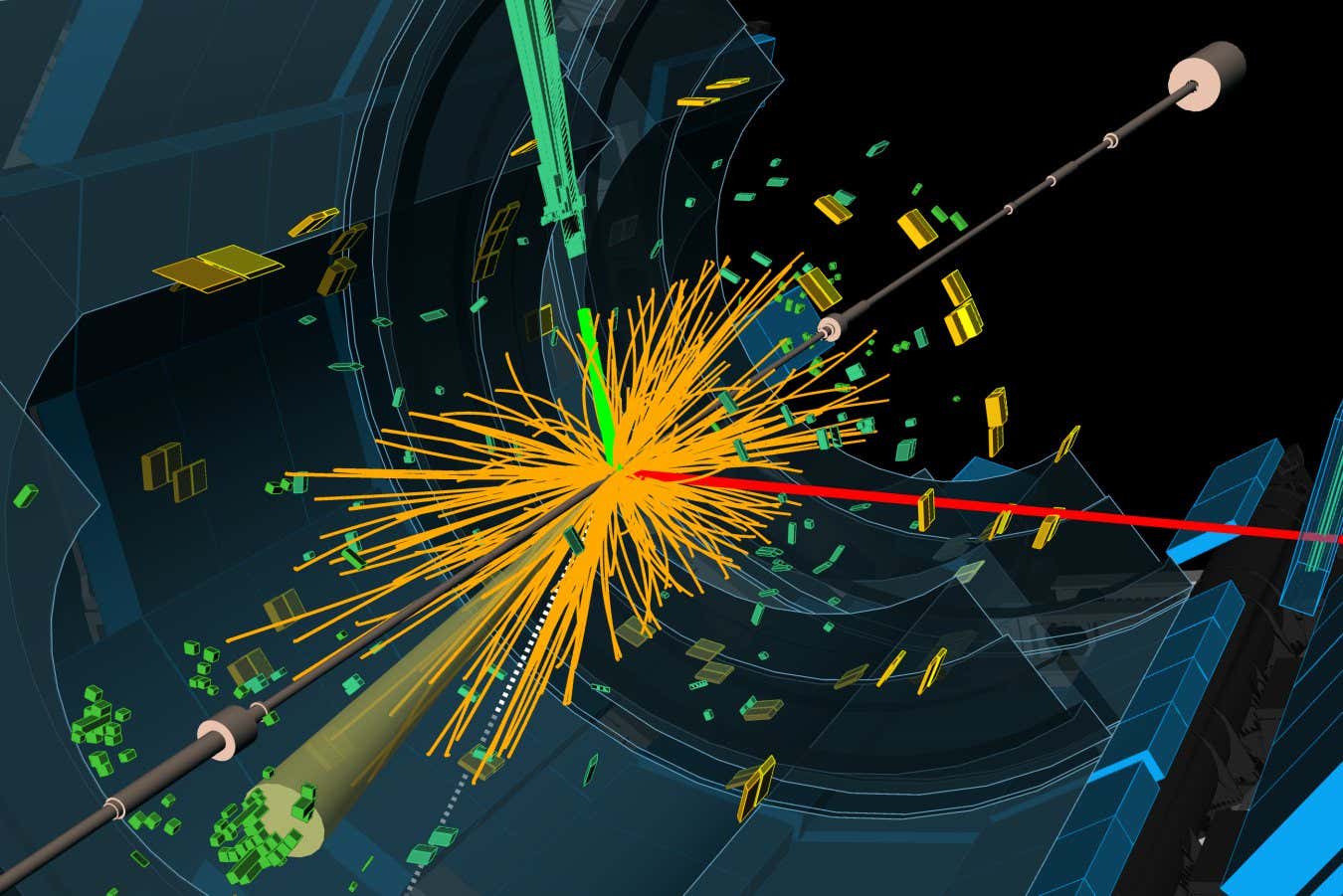
 Science & Environment1 day ago
Science & Environment1 day agoParticle physicists may have solved a strange mystery about the muon
-

 Science & Environment22 hours ago
Science & Environment22 hours agoHow the weird and powerful pull of black holes made me a physicist
-

 Politics20 hours ago
Politics20 hours agoIs there a £22bn ‘black hole’ in the UK’s public finances?
-

 Science & Environment20 hours ago
Science & Environment20 hours agoX-ray laser fires most powerful pulse ever recorded
-

 Science & Environment20 hours ago
Science & Environment20 hours agoHow indefinite causality could lead us to a theory of quantum gravity
-

 Science & Environment19 hours ago
Science & Environment19 hours agoDoughnut-shaped swirls of laser light can be used to transmit images
-

 Science & Environment18 hours ago
Science & Environment18 hours agoBeing in two places at once could make a quantum battery charge faster
-

 Science & Environment17 hours ago
Science & Environment17 hours agoWhy we are finally within reach of a room-temperature superconductor










You must be logged in to post a comment Login